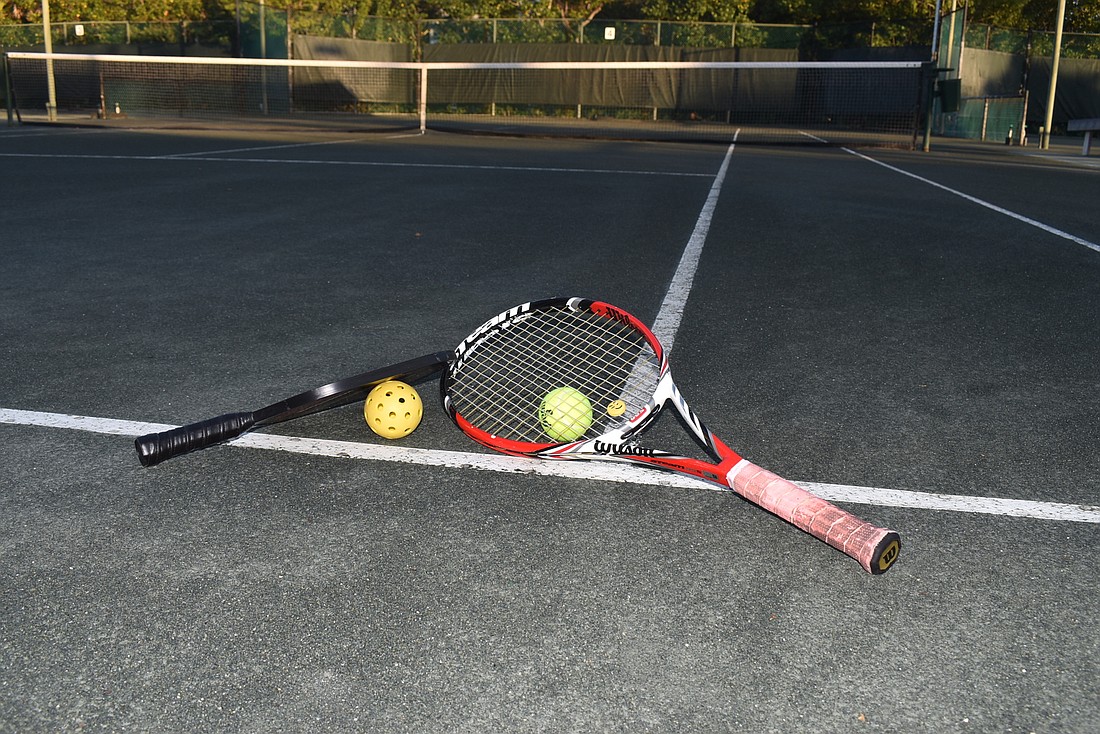- April 3, 2025
-
-
Loading

Venture into any park, recreation center, condominium or hotel in the Sarasota area, and there is a strong chance you’ll see them: people in athletic clothes, racket in hand, whacking a small ball back and forth between each other. In other words, tennis and pickleball players.
Tennis and pickleball can be played by athletes of virtually all ages; the two sports are closely related. That being said, they do have some contrasting health benefits. The Observer spoke with David Green, who plays on the Division I 60s team at the Longboat Key Public Tennis Center and is also an advanced pickleball player, and Sam Rothbart, an avid pickleball player who has “retired” from tennis because of injury, about the health benefits and drawbacks of each sport.
The most obvious health benefit of tennis is probably the amount of cardio involved. Tennis courts are larger than pickleball courts. Naturally, this means a lot more running, especially if you play singles. (Pickleball is usually played in doubles.)
“The physicality of the game is a lot different,” Green said. “Your physical abilities can make a huge difference in your success in tennis if you're just a good athlete, can get to the ball, keep the ball in play.”
Green also mentioned the difference in strokes between the two sports. Swings in tennis tend to be longer and faster than in pickleball, which means they require more core strength. This contrast is especially pronounced when it comes to serves. While pickleball players serve underhanded, tennis players toss the ball up, then reach out and lunge into it.
However, tennis can be a grueling sport at times. For one, it can put a lot of strain on the lower back, legs, ankles and feet because of the constant, sudden starting and stopping involved. The surface you play on also makes a difference: Clay and grass surfaces are more forgiving than hard courts. That being said, pickleball is virtually always played on hard courts. This is especially crucial during summer, when clay courts absorb heat as opposed to hard courts, which exacerbate it.
Tennis players are also more likely to have shoulder injuries than pickleball players; most pickleball shots stay below the waist. Rothbart can attest to this. He has torn his rotator cuff playing tennis twice. In addition to the different nature of shots between the two sports, Rothbart believes the heavier weight of tennis rackets puts more strain on the shoulder.
“I went to pickleball really because I couldn't successfully play tennis anymore,” Rothbart said.
“A lot of people who were tennis players whose bodies were breaking down on ‘em a little bit playing tennis have found a lot of fun and joy and competition being able to play pickleball because there's a lot of similarity with the net and the eye-hand,” Green added.
Green pointed out the difference in scoring systems as another example. Tennis is played in sets, which can sometimes take up to an hour or more to complete. Pickleball is usually played until someone hits 11 points, or perhaps 21. You can only score on your own serve, but it’s generally much quicker than tennis.
It’s important to note that pickleball, which Green described as a hybrid between tennis and ping pong, can still provide a cardio workout for many people. Rothbart described the sport as “fairly strenuous,” citing examples including ball-striking and rushing the net. Pickleball also works quick-twitch muscles, especially in the lower body, and helps practice hand-eye coordination.
“To be really good at pickleball, it takes a lot of skill and quick reactions,” Green said.
Although pickleball is generally easier on the body than tennis, it does not come without its strains. The sport requires players to bend down for many shots, which can be difficult on the lower back.
Green disagrees with tennis players who look down on pickleball, in part because they think it will hurt their tennis game. He said pickleball has helped his quickness, reaction time and volley game.
“They can complement each other,” Green said. “[The] thing about living on Longboat Key that you see is that tennis and pickleball are actually lifetime sports.”
“You’ll work up a sweat playing either one,” Rothbart added.